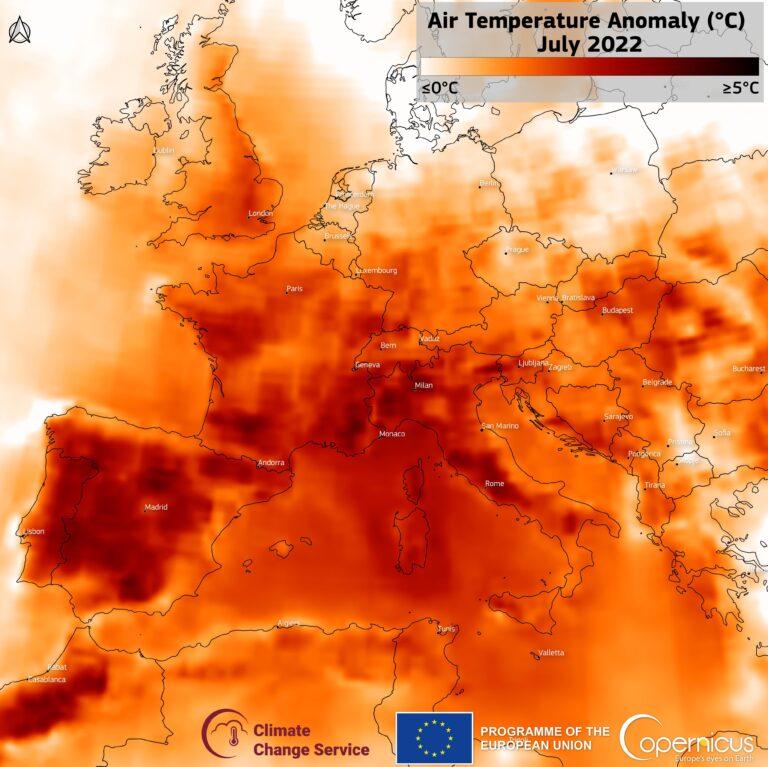A severe heat wave sweeping across Europe has intensified wildfire outbreaks, prompting emergency evacuations in several countries. As soaring temperatures and prolonged dry conditions create ideal environments for blazes to spread rapidly, authorities are struggling to contain fires that have already devastated large areas of forest and threatened communities. This escalating crisis highlights growing concerns over climate change and its impact on the continent’s increasingly volatile weather patterns.
Europe Heat Wave Triggers Widespread Wildfires Across Multiple Countries
Scorching temperatures across Europe have ignited a string of uncontrollable wildfires that are engulfing vast forested regions and threatening numerous communities. From Spain’s rugged coastlines to the dense woodlands of southern France and Italy, emergency services are stretched thin as flames rapidly spread, driven by prolonged drought and gusty winds. Authorities have issued multiple evacuation orders, prioritizing the safety of residents in affected areas while battling to contain the blazes with aerial water drops and ground crews.
Countries are collaborating to deploy resources efficiently in response to this crisis. Below is a summary of key wildfire areas and their statuses:
| Country | Region | Wildfire Status | Evacuations |
|---|---|---|---|
| Spain | Andalusia | Active, spreading | 3,000+ ordered |
| France | Provence-Alpes-CĂ´te d’Azur | Under control in some areas | 1,200 relocated |
| Italy | Tuscany | Rapid growth | 500+ evacuated |
| Portugal | Central Highlands | Contained but hot spots remain | 600 precautions |
Officials urge residents to adhere strictly to evacuation notices and take preventative measures as the heat wave persists with forecasts showing continued high temperatures. Climate experts warn that such extreme weather events are becoming more frequent, exacerbating wildfire risks across the continent. Firefighters and volunteers continue their grueling efforts, battling flames into the night to prevent further destruction and loss of life.
Emergency Services Mobilize Massive Evacuations Amid Rising Temperatures
As soaring temperatures continue to challenge multiple European regions, emergency responders are racing against time to safeguard thousands of residents from rapidly spreading wildfires. Authorities have issued urgent evacuation orders in affected areas, coordinating mass transport and sheltering efforts with remarkable efficiency. Firefighters and civil protection teams are operating around the clock, deploying helicopters, ground units, and specialized equipment to contain blazes that have consumed vast swathes of forest and residential zones alike. In Spain, Portugal, and southern France, densely populated communities have been moved to temporary accommodations, while evacuation centers provide vital medical and humanitarian support.
The scale of these evacuations highlights the growing risks posed by climate extremes. Officials emphasize that preventative measures and real-time monitoring remain crucial as unpredictable wind patterns threaten to intensify fire behavior. Below is a summary of the key evacuation figures reported so far:
| Country | Evacuees | Fires Active | Emergency Units Deployed |
|---|---|---|---|
| Spain | 12,500 | 18 | 300 |
| Portugal | 7,200 | 12 | 220 |
| France | 5,800 | 9 | 180 |
- Coordination: Cross-border cooperation enhances resource allocation.
- Communication: Real-time updates are broadcast via multiple platforms to inform evacuees.
- Safety: Priority remains on vulnerable populations, including elderly and children.
Experts Urge Immediate Action on Fire Prevention and Climate Adaptation Strategies
As wildfires rage across parts of Europe amid unprecedented heat waves, experts emphasize the urgent necessity of reinforcing fire prevention and climate adaptation practices. Authorities and environmental scientists warn that without immediate, strategic interventions, the frequency and intensity of such disasters will continue to escalate, posing severe threats to ecosystems, communities, and national economies. Key preventive measures highlighted include:
- Improved land management: Controlled burns and clearing dry underbrush to reduce fuel for fires.
- Upgraded emergency response systems: Enhanced detection technologies and rapid evacuation protocols.
- Investment in climate-resilient infrastructure: Fire-resistant building materials and landscape design.
- Strengthened cross-border cooperation: Coordinated resource sharing and joint firefighting efforts.
Climate adaptation strategies must integrate scientific research with policy action to mitigate the escalating risks. A recent comparative study reveals how different European regions fare in their preparedness and capacity to respond to such climatic stresses:
| Region | Fire Prevention Index | Climate Adaptation Score |
|---|---|---|
| Southern Europe | Low | Moderate |
| Central Europe | Moderate | High |
| Final Thoughts
As Europe continues to grapple with soaring temperatures and prolonged dry conditions, the unprecedented heat wave shows no sign of abating. The resulting wildfires, which have already forced thousands to evacuate across multiple countries, highlight the increasing risks posed by climate change to the region’s environment and communities. Authorities remain on high alert, calling for coordinated efforts to contain the blazes and protect vulnerable populations. The situation underscores the urgent need for both immediate action and long-term strategies to address the growing threat of extreme weather events across Europe. |




